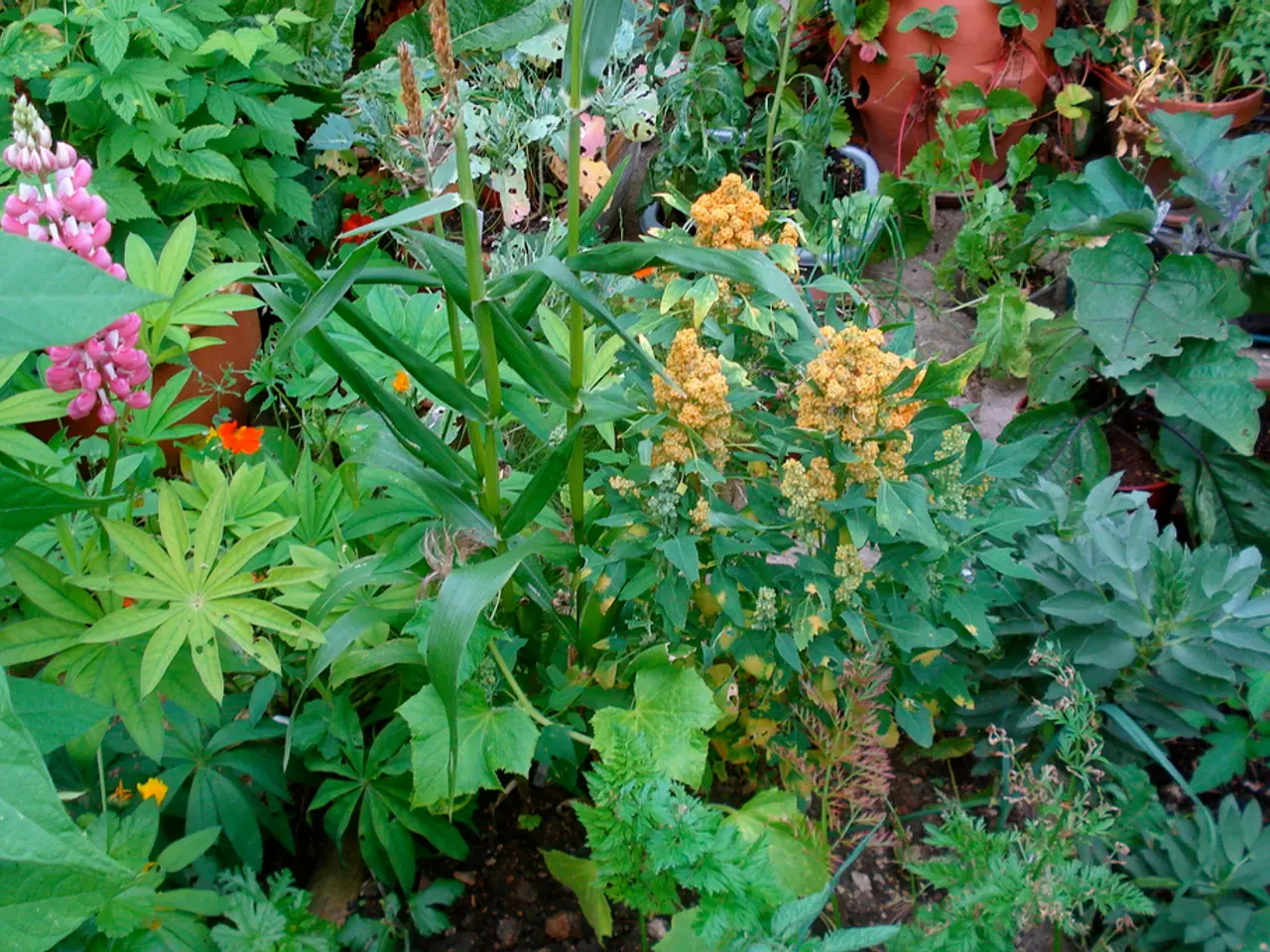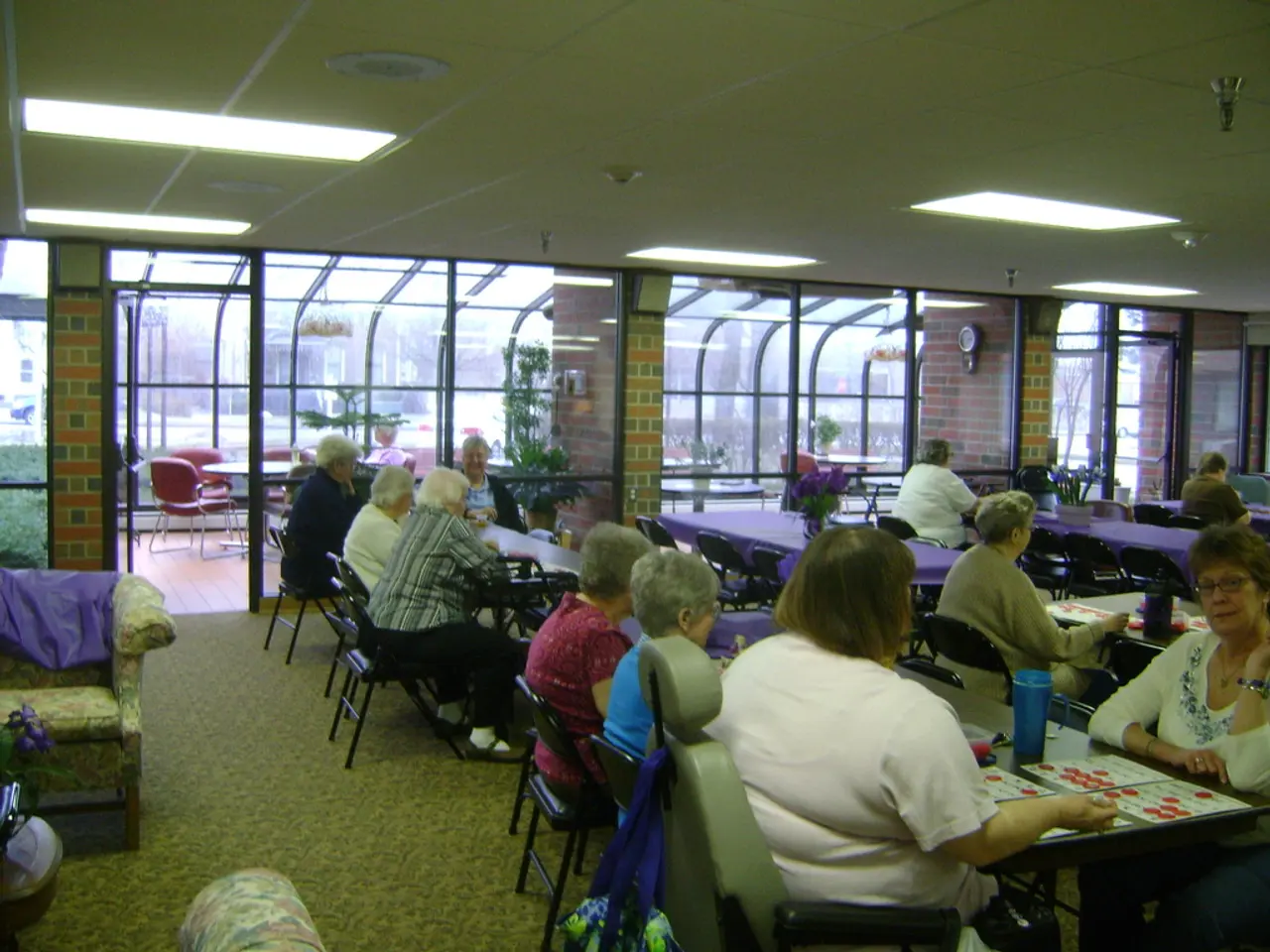Radical Makeover: Revamping the Yard!
In a charming suburban home, a family embarks on a transformative journey to revitalize their neglected garden. The grass, initially a yellowed expanse, and the spikey, dry soil were a stark contrast to the family's vision of a productive and pollinator-friendly space.
The family's goal is to cultivate a thriving vegetable garden that not only satisfies their culinary needs but also supports the essential pollinators in their local ecosystem. Already, rhubarb and raspberries have found a home in the garden, and the family intends to expand their harvest by growing salads and vegetables within the borders.
The first step in this ambitious project involves careful planning and design. The family assesses their available space, considering container gardens and vertical plantings for smaller areas. They ensure their chosen location receives at least six hours of direct sunlight daily and test and amend the soil for good drainage and fertility. A shallow dish or birdbath is added to provide easy access to water for both plants and pollinators.
The selection and arrangement of plants are crucial to the success of the garden. The family mixes vegetables like squash, cucumbers, tomatoes, peppers, eggplants, berries, and melons with pollinator-attracting flowers such as lavender, sunflowers, zinnias, and cosmos. They practice succession planting, choosing flowering plants that bloom at different times throughout the growing season to provide continuous food for bees. Grouping and diversity in flower choices create visual interest and attract bees more effectively.
To support bees and other pollinators, the family provides shelter by leaving some areas with bare soil, woody materials, or perennial plants for nesting and overwintering. They minimize the use of pesticides and herbicides, opting instead for natural pest control and tolerating some plant damage. They also include plants that serve as hosts for butterfly and bee larvae, such as milkweed for monarchs.
Maintenance is key to the garden's continued success. The family mulches and weeds to retain moisture and suppress weeds, waters wisely to encourage strong root growth, and monitors the garden's progress, rotating crops and adjusting planting schemes each year for better results.
In a quick reference table, the family summarizes their recommendations for plant selection, water source, pesticides, invasive plants, habitat features, succession planting, and maintenance.
The family is excited to share their progress as they transform their garden from a neglected space into a vibrant, productive, and bee-friendly vegetable haven. With the help of a gardening company, they are well on their way to creating a garden that benefits both their table and the local ecosystem.
The family's plan includes cultivating not only a vegetable garden for their culinary needs but also a pollinator-friendly space in their home-and-garden makeover, aspiring to create a thriving lifestyle that merges home gardening and the local ecosystem. Following this initial vision, they aim to expand their edible harvest beyond rhubarb and raspberries, incorporating salads and various vegetables into their garden borders.




